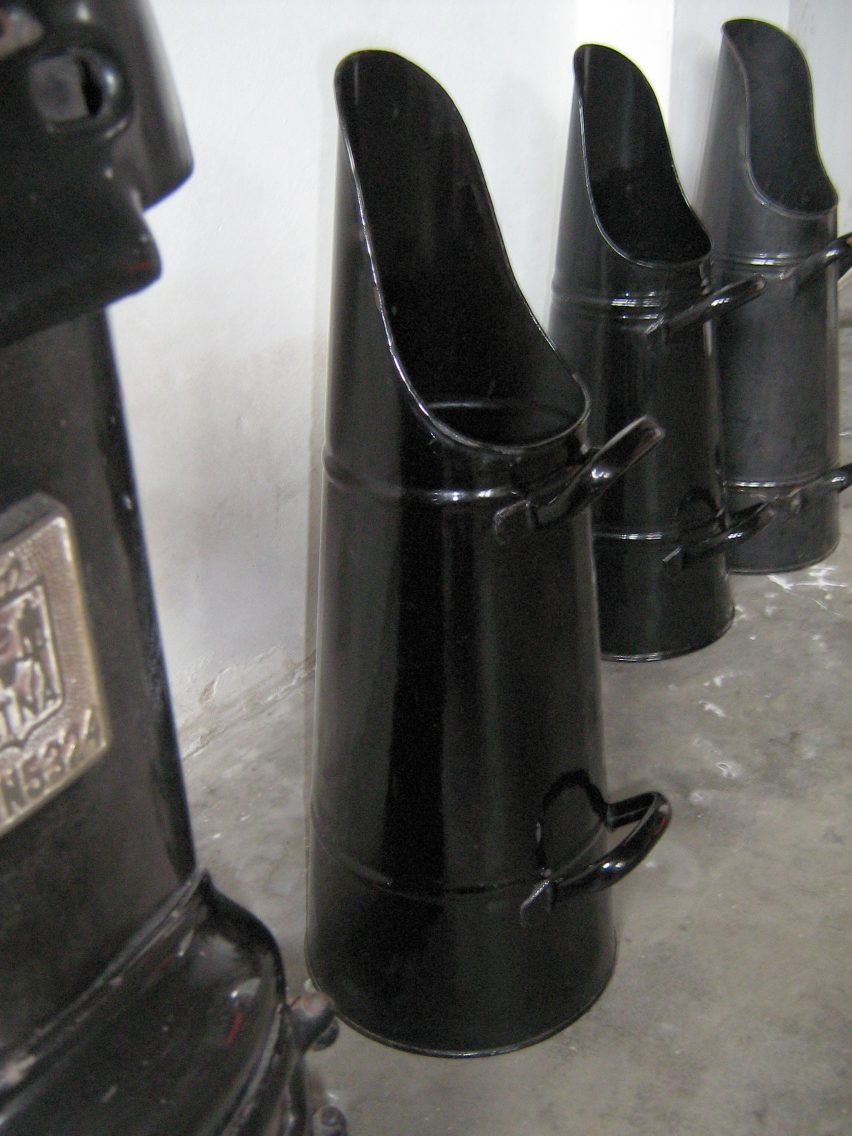coal scuttle on:
[Wikipedia]
[Google]
[Amazon]
 A coal scuttle, sometimes spelled ''coalscuttle'' and also called a ''hod'', "coal bucket", or "coal pail", is a
A coal scuttle, sometimes spelled ''coalscuttle'' and also called a ''hod'', "coal bucket", or "coal pail", is a
 Coal scuttles are usually made of metal and shaped as a vertical
Coal scuttles are usually made of metal and shaped as a vertical
 A coal scuttle, sometimes spelled ''coalscuttle'' and also called a ''hod'', "coal bucket", or "coal pail", is a
A coal scuttle, sometimes spelled ''coalscuttle'' and also called a ''hod'', "coal bucket", or "coal pail", is a bucket
A bucket is typically a watertight, vertical Cylinder (geometry), cylinder or Truncation (geometry), truncated Cone (geometry), cone or square, with an open top and a flat bottom that is attached to a semicircular carrying handle (grip), handle ...
-like container
A container is any receptacle or enclosure for holding a product used in storage, packaging, and transportation, including shipping.
Things kept inside of a container are protected on several sides by being inside of its structure. The term ...
for holding a small, intermediate supply of coal
Coal is a combustible black or brownish-black sedimentary rock, formed as rock strata called coal seams. Coal is mostly carbon with variable amounts of other Chemical element, elements, chiefly hydrogen, sulfur, oxygen, and nitrogen.
Coal i ...
convenient to an indoor coal-fired stove or heater.
Description
 Coal scuttles are usually made of metal and shaped as a vertical
Coal scuttles are usually made of metal and shaped as a vertical cylinder
A cylinder () has traditionally been a three-dimensional solid, one of the most basic of curvilinear geometric shapes. In elementary geometry, it is considered a prism with a circle as its base.
A cylinder may also be defined as an infinite ...
or truncated cone
In geometry, a cone is a three-dimensional figure that tapers smoothly from a flat base (typically a circle) to a point not contained in the base, called the '' apex'' or '' vertex''.
A cone is formed by a set of line segments, half-lines ...
, with the open top slanted for pouring coal on a fire. It may have one or two handles. Homes that do not use coal sometimes use a coal scuttle decoratively.
Origin
The word ''scuttle'' comes, via Middle English and Old English, from the Latin word ''scutulla'', meaning "serving platter". An alternative name, ''hod'', derives from the Old French ''hotte'', meaning basket to carry on the back', apparently from Frankish *hotta or some other Germanic source (compare Middle High German hotze 'cradle')", and is also used in reference to boxes used to carry bricks or other construction materials.Infamous use
In 1917, the Swedish serial killer Hilda Nilsson used a coal scuttle, a large bucket, and a washboard to drown children that she had been hired to care for. The infamous GermanStahlhelm
The ''Stahlhelm'' (German for "''steel helmet''") is a term used to refer to a series of German steel combat helmet designs intended to protect the wearer from common battlefield hazards such as shrapnel.
The armies of the great powers began ...
, or Steel Helmet, is sometimes referred to in English-language publications as the "Coal Scuttle" helmet, due to its shape resembling that of a coal scuttle.
References
{{reflist Coal Containers